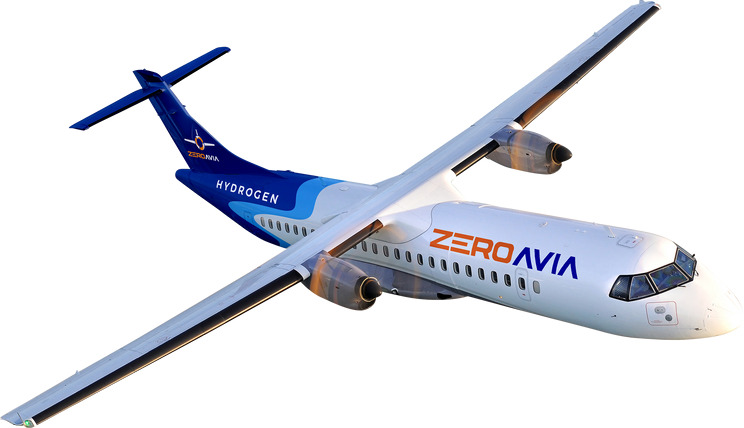ZeroAvia Forges Path to Hydrogen-Electric Regional Jets with MHIRJ

ZeroAvia today announced that it has identified clear applications for hydrogen-electric, zero-emission propulsion for regional jet aircraft.
As part of the initial technical study conducted alongside Type Certificate holder MHIRJ over the last year, an initial entry-point for a CRJ 700 retrofit with ZeroAvia’s ZA 2000RJ powertrain – confirming maximum takeoff weight, centre of gravity and structural allowances – has been identified. The study also validates the retrofit approach for other in-service CRJ series aircraft, such as the CRJ 550 and 900.
The hydrogen-electric CRJ aircraft would be equipped with two ZeroAvia regional jet engines (derivatives of the ZA2000 engine class) to match the existing performance and ZeroAvia analysis suggests it could support up to 60 passengers with a range of up to 560 nautical miles, covering in excess of 80 percent of current flights.
The study identified good opportunities for onboard hydrogen fuel storage and powertrain integration to ensure preservation of aircraft aerodynamics. Critically, the system would drastically reduce operating costs by virtue of hydrogen fuel use and reduced maintenance costs, creating opportunities for new routes, as well as more flights on existing routes to match or increase passenger volumes.
The technical assessment identified that the loss of turbine core thrust could be overcome within the constraints of the original airframe with increased fan diameter, while further efficiency gains were possible by adopting novel propulsor technologies such as geared, ducted electric fan or open rotor designs.
The assumptions based on the phase 1 study included HTPEM fuel cell system specific power of 2.4 kW/kg. ZeroAvia has already demonstrated 2.5 kW/kg at the cell level of its HTPEM stacks, and plans to deliver 3 kW/kg system level specific within two years. Such an achievement would boost the operating characteristics of the envisaged hydrogen-electric CRJ.
The CRJ is already the world’s most successful family of regional aircraft. There are more than 1,400 CRJ Series aircraft that could potentially be converted to fly with the ZA2000 engine.
Val Miftakhov, CEO, ZeroAvia, said: “At this early stage in our work together, to already see a viable pathway to clean propulsion with CRJ aircraft should be absolutely thrilling to everybody who wants us to keep flying. There is some payload and range compromise, but this technical study confirms a viable propulsion architecture and integration which could be utterly transformational. Before the end of the decade airlines could be flying zero-emission jets.”
Hiro Yamamoto, CEO, MHIRJ said: “MHIRJ is proud to work with ZeroAvia and to have completed the initial study to determine the viability of hydrogen propulsion on a regional jet. Confirming that hydrogen-electric propulsion could work for an aircraft like the CRJ is a great step forward towards the decarbonization of regional flying.”
ZeroAvia’s prototype ZA2000 hydrogen-electric system for 40-80 seat regional turboprop aircraft is soon to be tested aboard a 76-seat Dash 8-400 with a target of certifying the technology for use as early as 2027. This development will be a crucial enabler for the more intensive regional jet application also. The company has made significant advances on both its electric motor technology and fuel cell power generation, with ZA2000 motor cores and HTPEM fuel cell stacks already in testing.
